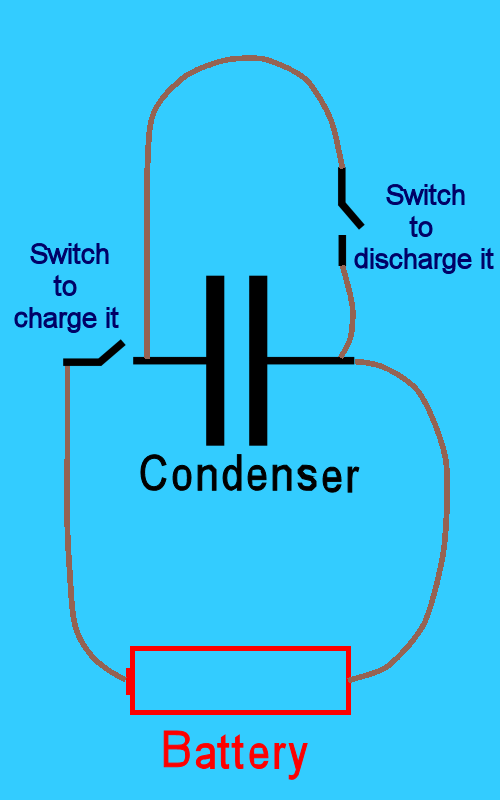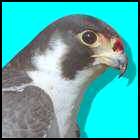BASIC OPERATION OF A PROCESSOR |
 A
processor could be compared with a box containing numerous switches
(transistors) associated with condensers.
One can have 2 switches controlling a condenser: one to charge it and
the other one to discharge it. Of course one makes sure they are never
closed at the same time. These condensers are in one of both possible
states: charged or discharged which depends on the closing or opening
of the switches and one can mathematically represent their state with
the values 0 or 1. That is what a bit is. Data are
recorded as series of 0s and 1s i.e. various switches and condensers
being in a fixed charged or discharged state closed or opened.
A
processor could be compared with a box containing numerous switches
(transistors) associated with condensers.
One can have 2 switches controlling a condenser: one to charge it and
the other one to discharge it. Of course one makes sure they are never
closed at the same time. These condensers are in one of both possible
states: charged or discharged which depends on the closing or opening
of the switches and one can mathematically represent their state with
the values 0 or 1. That is what a bit is. Data are
recorded as series of 0s and 1s i.e. various switches and condensers
being in a fixed charged or discharged state closed or opened.
The 01001110 series could represent a particular letter, say an N. It takes 8 bits to represent a character indeed. That relates to a byte. A byte is by definition equal to 8 bits.
 When
you type "N" on your keyboard, this one has been conceived
to send the 01001110 series through the cable connecting it to the computer.
And those bits will physically get stored into the computer memory in
terms of charged (for the 1s) or discharged (for the 0s) condensers.
Later on, by detecting the state of these condensers which are controlled
by switches and which serve as memory, the processor can retrieve the
information 01001110 and send it to the monitor which has been conceived
to print an "N" whenever it gets a 01001110. So much for the
storage and reading of informations at this point. The concepts of memory
and storage of data will be looked at in more details further ahead.
When
you type "N" on your keyboard, this one has been conceived
to send the 01001110 series through the cable connecting it to the computer.
And those bits will physically get stored into the computer memory in
terms of charged (for the 1s) or discharged (for the 0s) condensers.
Later on, by detecting the state of these condensers which are controlled
by switches and which serve as memory, the processor can retrieve the
information 01001110 and send it to the monitor which has been conceived
to print an "N" whenever it gets a 01001110. So much for the
storage and reading of informations at this point. The concepts of memory
and storage of data will be looked at in more details further ahead.
What about programs? They are also recorded as bits. These bits relate with charged or discharged condensers. Now if we connect one side of the condenser to the third pin of a transistor (see above), depending upon whether the condenser is charged or not, current will flow or not between the 2 other pins of that transistor. In other words what is being stored in memory can determine whether such or such switch will be open or closed. Then some "switches" can control other ones. A transistor or "electronic tap" can enable another one which can control yet another one. If such switch gets open other ones located in such area get closed and others in such other area get open.
Programs take informations and perform computations and conversions on them. How does this all work? There is an internal clock which relentlessly generates a series 0101010101... at a mad rate depending on the amount of "megaherz" or "gigaherz" of your processor. A megaherz means 1 million times per second. A gigaherz means 1 billion times per second. Let's say your computer was an 800 Mhz, that would mean its clock gives 800 millions impulses per second. These impulses are alternances of 0s and 1s which pace the execution of programs. When you click with your mouse on a precise spot of the screen to launch a particular program the relative position of the mouse and the clicking send an impulse to the processor to start such program which is located in such area of the memory. The clock makes that things are carried out step by step, bits written in the program are read in sequence therefore switches are opened and closed in a set order which causes all sorts of operations to take place with bits. For instance you decided to change the "N" into a "b". You type the b at the keyboard then you click on "Save". And at that moment the program "Save" that is pre-recorded is read by the processor then this one starts to execute it. The "b" is related with a 01100010. The processor follows the instructions of the program by opening and closing switches as necessary so that the 01100010 will replace the 01001110. In this particular example the first condenser will remain discharged, the second one will remain charged, the third one will be discharged (it was at 1 and must now represent a 0) and so on in order to put a 01001110 at the place where there was a 01100010. Even if that took 1000 operations, with a clock running at 800 millions per second, it would only take an 800,000th of a second...
Bits which constitute a program have been pre-recorded by a programmer. In actual facts a programmer seldom goes down to the level of 0s and 1s. He is using a programming language which can be more or less close to the english language and that will write for him the 0s and the 1s at the right places so that he doesn't have to worry too much about it.
By the way the first computers were programmed through actual switches that the programmer had to manually activate...
Orders of magnitude
It
may seem cumbersome to have to use 16 switches and 8 condensers just
to record one letter of the alphabet, which already adds up to 24 electronic
components... But don't worry, a memory board holds billions of these
switches and condensers. To give you an idea, a 100 pages book containing
25 lines of 125 characters would have 100x25x125=312,500 characters.
Il would thus take 24x312,500 electronic components to store such a
book in memory. That only makes a total of 7,500,000 (7 millions five
hundred thousands). Knowing that it takes one byte for one character
one can record 400 books of 100 pages before reaching 1 billion bits...
and more than that is contained in a single memory board of 5x1 inch.
A CD-ROM (4 to 5 inch diameter) can contain over 2,000 books of 100
pages which could fill a library...
| |
|
| Copyright 2003-2004 Jacques Lederer |


